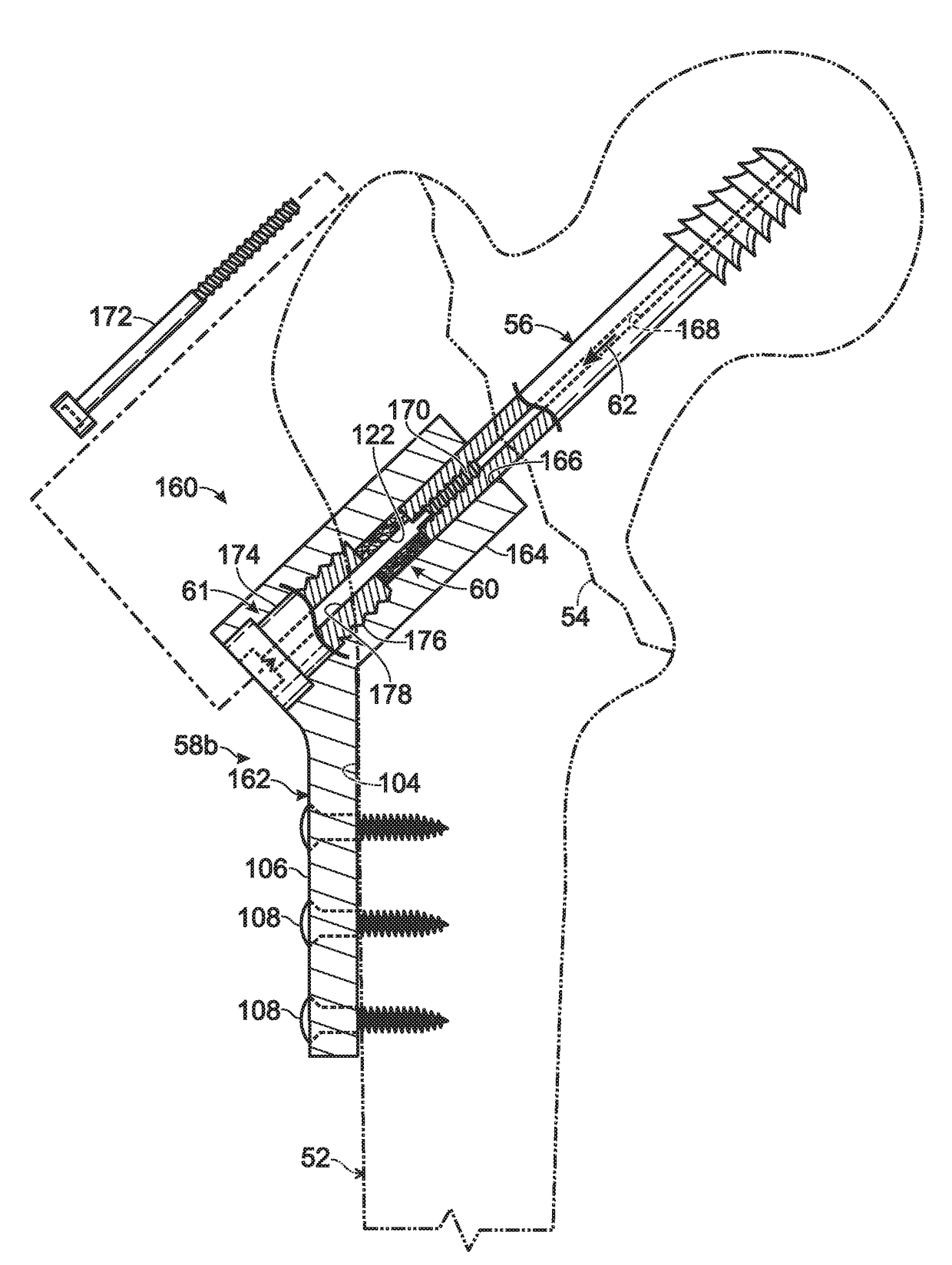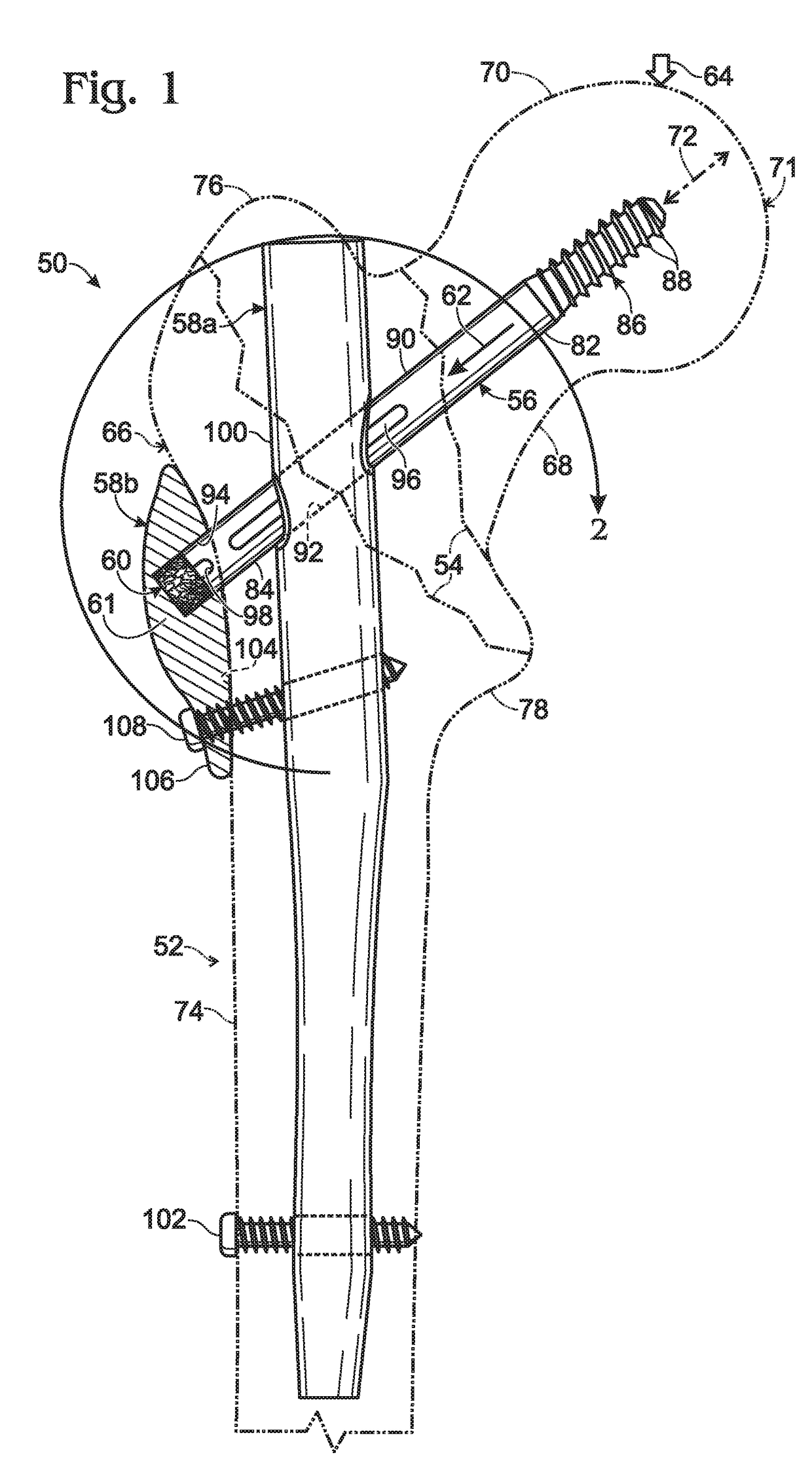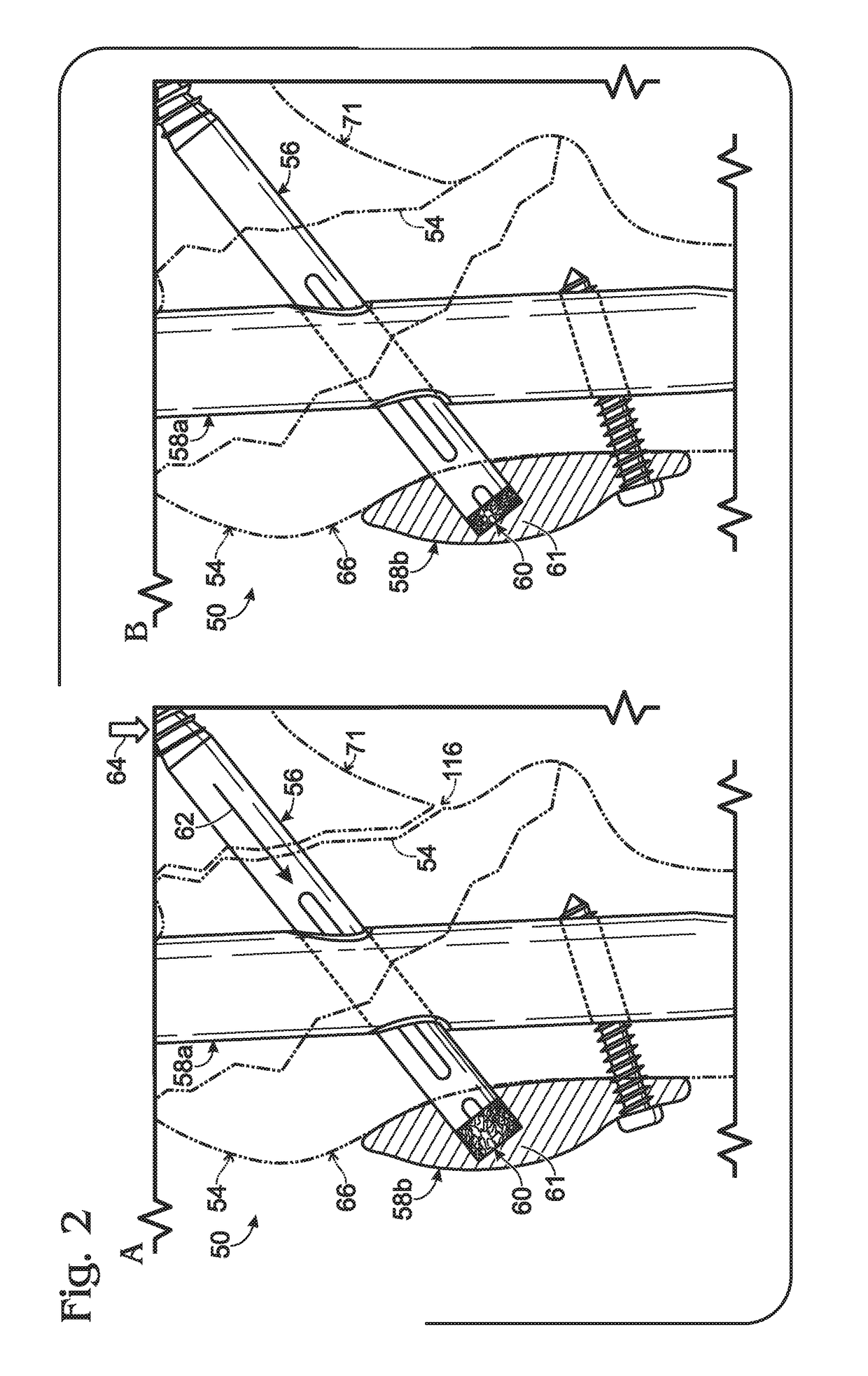Hip fixation with load-controlled dynamization
a technology of load-controlled dynamization and hip fixation, which is applied in the direction of osteosynthesis devices, bone plates, fasteners, etc., can solve the problem that neither approach may be optimal
- Summary
- Abstract
- Description
- Claims
- Application Information
AI Technical Summary
Benefits of technology
Problems solved by technology
Method used
Image
Examples
example 1
[0070]This example describes another exemplary hip fixation system 140 including a nail 100 (as a support member 58a), and a fixation element 56 attached to a deformable member 60; see FIG. 6.
[0071]Hip fixation system 140 may include any suitable combination of features described above, such as in Section I for system 50 (e.g., see FIGS. 1-5), and elsewhere in the present disclosure. However, system 140 may not utilize an outer support member 58b (compare FIGS. 1 and 6).
[0072]Fixation element 56 is pre-attached to a deformable member 60 that is positioned for contact with a stop member 61. The stop member is attached to nail and is adjustably positionable along the long axis of the nail by turning at least a portion of the stop member, to advance the stop member into an operative position that restricts rotation of the fixation element about its long axis and obstructs axial travel of the deformable member after the nail and fixation element have been placed in...
example 2
ion System with a Side Plate Having a Barrel Portion
[0075]This example describes an exemplary hip fixation system 160 including a side plate 162 (as a support member 58b) having a barrel portion 164 that extends into femur 52, and also including a deformable member 60 disposed in barrel portion 164; see FIG. 7.
[0076]Hip fixation system 160 may include any suitable combination of features described above, such as in Section I for system 50 (e.g., see FIGS. 1-5), and elsewhere in the present disclosure (e.g., Example 1). However, system 160 may not utilize an inner support member 58a (compare FIGS. 1, 6, and 7). System 160 may be suitable for fixation of an intertrochanteric fracture 54, among others.
[0077]Side plate 162 (also called a plate device) may include a mounting portion 106 from which barrel portion 164 projects. The mounting portion may be configured to be mounted on the proximal femur, such as mounted on a lateral surface region provided by lateral cortex 104. The mounting...
example 3
ion Systems for Neck Fractures
[0083]This example describes exemplary hip fixation systems 180, 190 each having a deformable member 60 and configured to fix femoral neck fractures; see FIGS. 8-11.
[0084]Hip fixation systems 180, 190 may include any suitable combination of features described above, such as in Section I for system 50 (e.g., see FIGS. 1-5), and elsewhere in the present disclosure (e.g., see Example 1). However, systems 180, 190 each may (or may not) include a plurality of fixation elements 56, which may extend parallel to one another after placement into the femur. Each fixation element 56 may or may not be cannulated. Each fixation element 56 may have a head 192 that engages a lateral surface region of the femur, to block inward travel of the fixation element into the femur, such that the fixation element applies compression to the femur at fracture 54 during installation. Systems 180, 190 may include a support member 58b in the form of a buttress plate that is mounted ...
PUM
 Login to View More
Login to View More Abstract
Description
Claims
Application Information
 Login to View More
Login to View More - R&D
- Intellectual Property
- Life Sciences
- Materials
- Tech Scout
- Unparalleled Data Quality
- Higher Quality Content
- 60% Fewer Hallucinations
Browse by: Latest US Patents, China's latest patents, Technical Efficacy Thesaurus, Application Domain, Technology Topic, Popular Technical Reports.
© 2025 PatSnap. All rights reserved.Legal|Privacy policy|Modern Slavery Act Transparency Statement|Sitemap|About US| Contact US: help@patsnap.com



